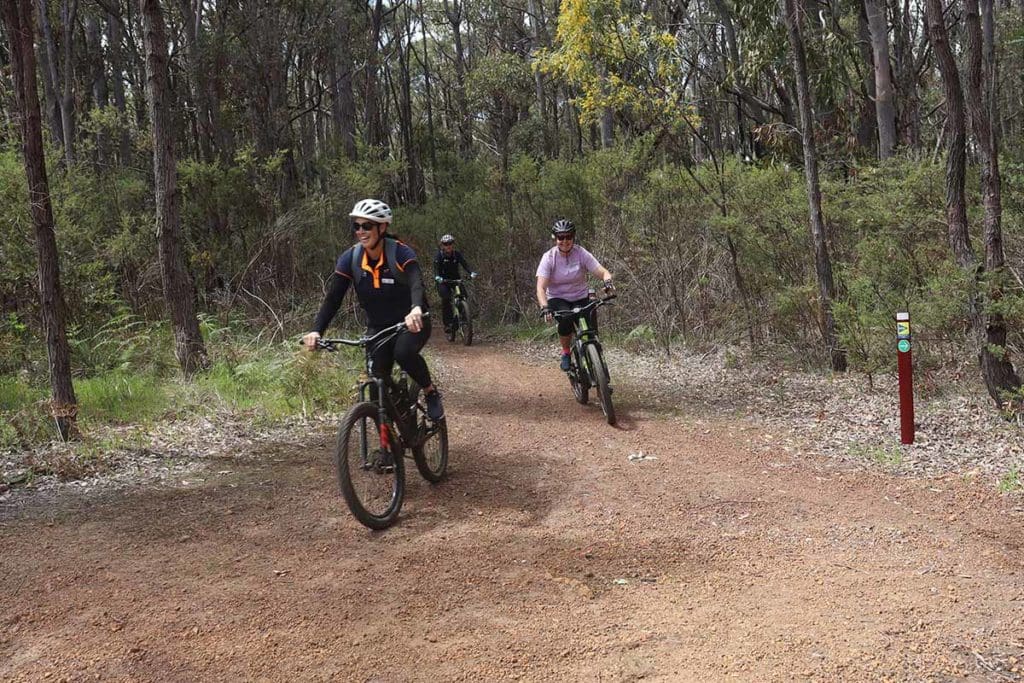WA MTB Strategy Recommends State-Wide Trail Network

Perth, WA
A Western Australian Mountain Bike Strategy released last month has proposed the development of a state-wide network of sustainable mountain bike facilities and experiences.
The 10-year strategy, for mountain biking and off-road cycling in WA, says a state-wide network, based on an existing significance hierarchy would help ensure trail developments are “of the right type, in the right place and for the right reasons”.
The significance hierarchy comprises three levels – national, regional and local – and provides a quantitative justification for identifying the size of a trail network.
“Regional master planning is an important part of the process to help identify suitable locations for future mountain bike trail development and is encouraged for regions which have not yet completed this process,” according to the strategy.
“Future master planning should be prioritised for regions where there are currently gaps in the existing planning framework.”
“37% of mountain bikers reported they would be prepared to contribute $5-$10 per ride towards the cost of maintaining and managing trails.”
According to the document, WA has experienced record investment into significant trail developments in recent years, including $18.4 million for trail towns in Collie and Dwellingup and a further $20 million across projects in the Perth Hills, South West and Great Southern regions.
“While this investment has been welcomed and has fast tracked progress of important trail developments, a sustainable recurring funding resource is not currently available.” it says.
“Securing long-term sustainable funding for new trail developments is necessary in order to ensure that developments can continue, particularly for local trail developments that can meet the needs for local communities right around the State.”
According to the report, 37% of mountain bikers reported they would be prepared to contribute $5-$10 per ride towards the cost of maintaining and managing trails.
The strategy was developed by WestCycle in partnership with Department of Local Government, Sport and Cultural Industries, and the Department of Biodiversity, Conservation and Attractions.
It says there are more people mountain biking in WA than ever before. However, participation is skewed to particular demographic groups.
“More needs to be done to increase participation amongst juniors, females, Aboriginal people and socially and culturally diverse groups, through offering introductory programs that develop skills and connect participants with appropriate support and facilities,” it states.
There are now 199 mountain bike trails listed on the Trails WA website, covering 1925.5 km of trail.
The document’s recommendations also include designing trails suitable for the growing number of e-MTBs.
“The potential blurring of the lines between e-trail bikes and e-MTBs needs to be considered due to the different impacts that the use of e-trail bikes presents to mountain bike trails.”
“The use of electric assist mountain bikes is rapidly growing each year in Australia. Fourteen percent of the community survey participants indicated that they regularly use an e-MTB on trails,” it says.
“While e-MTBs have and will continue to play a positive role in improving accessibility to trails for people of varying abilities and backgrounds, consideration needs to be given to trail design and maintenance requirements, potential environmental impacts, safety and regulatory issues, as well as the opportunities that increased participation provides.
“A greater understanding of the potential impacts on e-MTB use is required to ensure that the increased prevalence of e-MTB is managed sustainably and does not have unexpected or adverse impacts on the development of mountain bike riding.
“The use of electric trail bikes (e-trail bikes) is also increasing and presents an additional challenge. The potential blurring of the lines between e-trail bikes and e-MTBs needs to be considered due to the different impacts that the use of e-trail bikes presents to mountain bike trails.”
